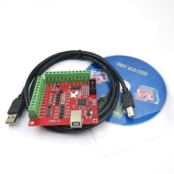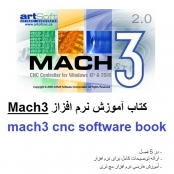When the vendor invoice is paid, the voucher and its attachments (including a copy of the check that was issued) will be stored in a paid voucher/invoice file. If paper documents are involved, an office machine could perforate the word “PAID” through the voucher and its attachments. If you’re unable to pay an invoice by the supplier’s deadline, typically within 30 days, they may be able to extend the due date. In accounting, this reclassification is known as a “long-term note,” which is basically a drawn-out IOU. If you do find yourself in this situation, it’s a good idea to be transparent and communicative with suppliers. Remember, your payment not only applies to your own finance management, but it also impacts their finances.
This strategic approach empowers teams to manage functions like days payable outstanding (DPO) more effectively, adjusting payment timings according to your business needs. The feature also enables teams to pay vendors on time, without bumps in the road. When it comes to ACH vs. checks vs. digital payments, checks are the most vulnerable payment method. In fact, 63% of organizations experienced fraudulent activity with traditional checks in the past year. With this in mind, consider implementing and maintaining controls like user authentication, human monitoring of cash flow, and meticulous digital recordkeeping. Accounts payable exclusively refers to short-term debts that your business owes.
This means that you expect to pay the amount within one year, contrary to long-term debts like loans, which may take years to pay off. Technically, the amounts are debts, not expenses because the funds never reach your income statement. Instead, accounts payable only appear on your balance sheet as current liabilities. Once you’ve completed these steps, it’s time to update your books to reflect the most current information. After a vendor payment has gone through, you can remove it from your list of accounts payable.
The vendor invoice will include details on the quantity of goods or services, the price, payment terms, and a due date, such as net 30. The proper accounts payable procedure begins with a good chart of accounts, which enables you to post your expenses to the correct account. The process is complete when you issue a check or electronic payment to the vendor for the amount due on or before the stated due date. So whether you prefer the speed and security of digital payments or the familiarity of traditional checks, it’s time to leave siloed workflows in the past. A Chief Financial Officer (CFO) or Controller typically signs approved checks, but that person shouldn’t be the one assembling the check run.
Accounts payable only applies to businesses that use the accrual basis of accounting, not cash-based accounting. This is because the accrual method of accounting records income and expenses when they are invoiced and paid. Accrual accounting uses invoice processing to both procure and offer services on a credit or debit basis, rather than requiring payment to be made in real time.
Accounts Payable Frequently Asked Questions (FAQs)
Both accounts payable and accounts receivable are vital parts of the accounting process. Accounts payable, as explained above, are what is owed to suppliers or service providers for products received or services rendered. Accounts payable are considered liabilities, since it is money that is owed. Some companies use a voucher in order to document or “vouch for” the completeness of the approval process.
Statements from vendors
If you have an approval process in place, such as requiring a manager’s signature, do so before the invoice is approved for payment. A purchase order is a document sent to a vendor or supplier to request goods or services. It includes details such as the quantity of items, the price, and the delivery date. We’re firm believers in the Golden Rule, which is why editorial opinions are ours alone and have not been previously reviewed, approved, or endorsed by included advertisers. The Ascent, a Motley Fool service, does not cover all offers on the market.
MineralTree
A mobile app is also a great way to gather authorized signatures, if paying by check. A poorly run accounts payable process can also mean missing a discount for paying some bills early. If vendor invoices are not paid when they become due, supplier relationships could be strained. If that were to occur it could have extreme consequences for a cash-strapped company.
- Whether that’s getting your hands dirty at a job site or dazzling clients and securing contracts, more time means more control over your journey.
- You’re likely to get a call from your supplier, which could jeopardise your supplier relationships if you’re not careful.
- Again, if you only have a few vendors to pay, this may not be an issue, but even if you have to pay just five vendors monthly, your life will be much easier if you use accounting software.
- This method allows you to view incoming bills and help to ensure accuracy while avoiding payment errors.
If you don’t pay by December 24, the full amount of the invoice is due by January 14 at the latest. On the other hand, accounts receivable (A/R) is money owed to you for goods or services you provided to your customers on credit. Accounts receivable balances are considered an asset, as that number indicates how much money is owed to you by your customers. Knowing this number comes into play when digging into deeper business insights by calculating your accounts receivable turnover. When accounts payable items are paid, the accounts payable account is debited, with cash credited. In fact, 51.6% of survey respondents noted that this process was either their biggest or second biggest obstacle to converting more AP spend into digital payment methods.
You also have a variety of payment options available to you including a standard check run, credit card payment, or ACH transfer. The importance of efficient check runs for accounts payable cannot be overstated. Without the ability to pay vendors on time and in full, your team and organization risk tarnishing these crucial relationships. But for an efficient AP check run, you need efficiency throughout your entire AP workflow, from invoice capture to payment. Traditional check runs often follow a weekly schedule, which doesn’t always accommodate urgent payments or unexpected cash flow needs. Implementing a system to schedule payments in advance can reduce the stress and time spent on manual check processing.
What is a check run in accounts payable?
The drawback to infrequent check runs is that payments are approved and dispatched sometimes weeks before they are due. Ideally, payments should be approved and distributed only when due and after the company is confident that deposits are made. To illustrate the three-way match, let’s assume that BuyerCo needs 10 cartridges of toner for its printers. BuyerCo issues a purchase order to SupplierCorp for 10 cartridges at $60 per cartridge that are to be delivered in 10 days. Regardless of who manages it, the accounts payable process involves a few basic steps. Accounts about form 1094 payable refers to the amount of money a business owes to its suppliers and vendors for goods or services received.
After verifying the accuracy of your invoices, you can initiate invoice payments annualized salary to the appropriate vendors. Depending on the vendor’s preference and your payment method, you may need to notify them that payment is on its way. Accounts payable describes the various amounts of money your business owes to external vendors for goods and services that you have not yet paid for.
Use the links below to navigate our guide, or read through for a detailed overview of the accounts payable system. The accounts payable process plays an important role in your business’s accounting operations for several reasons. There are many moving parts to keep track of when taking care of your business’s accounting, and the accounts payable process is one of the most important.















